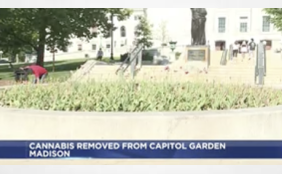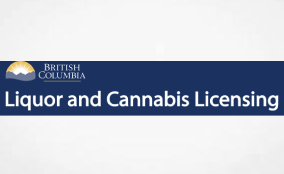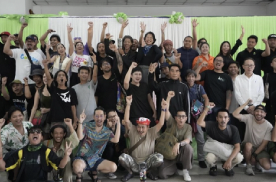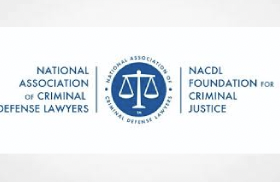Cannabis Client Alert: Three Part Series on Environmental, Health, Safety, and Sustainability Regulation of the Cannabis Industry
WRITTEN BY:
Cannabis growing and processing operations face increasing regulatory pressure to assess and reduce their environmental impacts – especially in the areas of water quality, air emissions, energy use and sustainability, pesticide use, and consumer warnings. Adding to the complexity, this pressure often comes simultaneously from state, regional, and/or local authorities that impose overlapping environmental requirements, which are not consistent from jurisdiction to jurisdiction. Navigating these issues without assistance from environmental counsel could result in costly project delays, or potentially even fines or governmental orders to cease operations.
In part one of this three-part series, we explore environmental regulatory requirements related to air permitting, wastewater, and California’s Proposition 65 labeling requirements.
Air Permitting
What operations or equipment may require a permit?
Air permitting requirements may apply to several aspects of cannabis industry operations. For example, emission of terpenes – a reactive organic compound – have the potential to occur during processing or manufacturing operations. Further, the use of certain solvents and cleaning materials in processing operations may generate regulated volatile organic compounds (VOCs). Operations with propane, gas- or diesel-powered ancillary equipment – such as emergency generators, boilers, or space or water heaters – may need to obtain permits for this equipment as well.
How do I determine whether an air permit is required?
Depending on the state where the facility is located, the first step in an air permitting analysis is calculating the facility’s Maximum Theoretical Emissions (MTE) and/or Potential to Emit (PTE) air pollutants. Because this calculation generally determines the type of air permit (and therefore the level of regulatory oversight) an operation may need, and because there are multiple methods of calculating these values, we recommend that this analysis be undertaken with expert legal and technical assistance. Once calculated, the PTE typically then serves as a basis for discussion with the regulatory agency with jurisdiction about permitting requirements. Due to the rapidly changing nature of the regulatory regime surrounding cannabis operations, we expect most permitting decisions will be made on a case-by-case basis.
What other requirements apply if my operations require an air permit?
Air permits restrict the amount of air pollutants allowed to be emitted from a facility. This may be done through production or operating limits, substitutions of input materials, or pollution-control devices that must be purchased and built in to facility operations. These limitations will be factored into the facility’s air permit as operating conditions, and must be strictly followed. Air permits also typically require a facility to track and record its air emissions on a rolling basis, document any exceedances of air emissions and/or equipment failures, and report this information to the regulatory authority at least on an annual basis.
Nuisance Odors
As cannabis growing and processing operations have proliferated in urban areas, there has been a concomitant rise in odor complaints associated with these operations. Increasingly – and particularly so in jurisdictions that do not impose odor-control requirements by law or as a permit condition – governmental authorities and private citizens have been using nuisance law to attempt to force cannabis operators to curtail or otherwise manage odors emitting beyond facility fence lines.
Every state has some form of nuisance law, which generally prohibits a facility from emitting noise, odors, and other unpleasant activities to neighboring properties in a manner that unreasonably interferes with the neighbor’s use and enjoyment of his or her property. With few exceptions, there are no bright-line rules in nuisance law – each claim is assessed on a case-by-case basis, with “reasonableness” as the touchstone. Importantly, conduct that is otherwise legal – for example, growing or processing marijuana plants in states that have legalized cannabis – can still constitute a nuisance, if the interference is unreasonable.
Nuisance suits pose a substantial risk to ongoing business operations. This is because the winner of a successful nuisance suit may obtain money damages, or a court order to curtail or even cease the offending activities entirely. Cannabis growers and processors can therefore benefit from implementing a multipronged, proactive odor control strategy, which ideally includes both odor control technologies and community outreach as components.
Water Use Requirements
Water is essential to cannabis growth and production operations. Unfortunately, water law in the United States is complex, highly dependent on state and local rules, and ultimately best navigated with the help of expert counsel. Depending on its operations, a cannabis growing and/or processing operation may be subject to multiple permitting requirements enforced by different administrative agencies. Cannabis operators should assess how they use water in every step of the process – from the growing fields, to processing operations, to reuse and disposal – to ensure these actions comply with all applicable laws.
Water Rights
A water right is a legal entitlement that permits water to be diverted from a particular source and put to beneficial use by the holder of the right. A water right is technically a property right, although holders do not legally own the water itself – rather, they simply own the right to use it in a particular way. Further, the exercise of certain water rights may require a permit or license from a local, regional, or state water authority – particularly in western states, where water rights law has evolved differently from that in other parts of the country where water is often more plentiful.
Cannabis growers and processors will need to demonstrate that they have secured a lawful, reliable source of water to service their operations (in some cases, this showing is required as part of the process of obtaining the grower/processor license from the cannabis permitting authority). In cities or urban areas, cannabis growers/processors may be able to connect to the public water supply system as a commercial customer. However, operators should confirm whether the water supplier has enough capacity to serve the business on an ongoing basis. Depending on the city or watershed where the cannabis operation is located, the public water supply system may not have adequate volumes to supply the required amounts at all times – and especially during drought conditions, when the supplier may be required by law to give preference to non-commercial users of the system.
In rural areas, the sourcing process may be more complicated. Because of the complexities involved in water rights law, cannabis operators cannot assume that they automatically have the right to use water from a well on their property, or divert water from a stream running on or adjacent to the property. In many cases, fee landowners do not own the rights to the water on or underneath their property, or their rights may be subordinate to upstream owners. Operators may need to undertake a legal due diligence process to determine who owns the water rights associated with the property on which their operations are conducted. Operators who do not own water rights will need to acquire rights from legal owner, which can be done by contract (e.g., sale or lease of the water rights). However, jurisdictions may require a permit to effect the transfer, which can take additional time (one agency in New Mexico recently reported an average processing time of 8 to 10 months for water-rights-related permit applications, due to heavy volume).
Water Use in Operations
Once a cannabis operation has secured a legal source of water, it must then assess what permits may be required to ensure that process water from operations is discharged and otherwise managed appropriately. The principal federal law governing the discharge of wastewater is the Clean Water Act, 33 § U.S.C. 1251 et seq (“CWA”). Broadly, the CWA prohibits the discharge of pollutants from “point sources” (e.g., a discharge pipe at cannabis processing facility) into waters of the United States, unless a permit is obtained for the discharge. U.S. EPA’s National Pollutant Discharge Elimination System (“NPDES”) establishes wastewater permitting and discharge standards that are primarily administered by state, regional, or local water regulatory authorities.
An indoor cultivation and/or processing facility could be considered a point source of pollution under the CWA if it generates wastewater from growing or processing operations. Constituents of concern associated with cannabis wastewater include pesticides, nutrients, and certain biological agents that can affect the biological oxygen demand (BOD), chemical oxygen demand (COD), and total suspended solids (TSS) within the wastewater. Wastewater from the extraction process can contain solvents that must be treated as hazardous waste if they are not entirely recovered in a closed-loop system.
In general, wastewater from cannabis growing or processing operations cannot be disposed of in onsite wells or septic systems, or washed into stormwater drains. If a cannabis operation is located in an area where the sewer system connects to a publicly-owned treatment works (POTW), the operator will need to contact the POTW prior to beginning discharge. Because POTWs each have different capacities, capabilities, and treatment systems, discharge limitations and restrictions can vary considerably. A POTW may require wastewater pretreatment at the point source (i.e., the cannabis facility) before it will permit discharge to the municipal system, thereby necessitating the installation of a wastewater treatment system, which can be costly.
If a POTW is not able to accept wastewater from cannabis operations, the facility cannot obtain an NPDES permit for direct discharge of wastewater, or if the facility is not connected to the municipal water system, options become more limited. The facility may need to store the wastewater onsite for a period of time and/or contract with a waste hauler to remove it, which may trigger additional permitting requirements or the need to characterize the waste stream as hazardous or non-hazardous.
Proposition 65
California’s Safe Drinking Water and Toxic Enforcement Act of 1986, known commonly as “Prop 65,” is a state law that requires labeling of products that contain chemicals that the state has designated as being known to cause cancer, birth defects or other reproductive harm. Cannabis (marijuana) smoke has been listed as a carcinogen (only) since 2009, but THC has not been previously listed. That changed on January 3, 2020, when the state listed both cannabis smoke and THC as reproductive toxins under Proposition 65. Therefore, cannabis smoke is now listed for both cancer and reproductive harm, and THC has been added to the Prop 65 list for the first time.
The listing does not include a safe harbor level, meaning that products with any detectable level of THC – including products that contain less than 0.3% THC in conformance with federal law – will require Prop 65 warning labels, unless it can be shown that the anticipated exposure level will not pose a significant risk of cancer or reproductive harm. Businesses with ten or more employees will also likely be required to provide warnings to their employees. The California Office of Health Hazard Assessment (OEHHA) provides guidance for businesses in calculating their own safe harbor level in the absence of one set by OEHHA, but recommends consulting a qualified professional to assist with this process.
Prop 65’s warning requirements apply to any business in the chain of distribution, including manufacturers, distributors and retailers in California – but also includes out-of-state companies selling products in California. THC products sold without warnings (or with warnings that do not satisfy the regulation) can expose manufacturers, sellers, and distributors to Prop 65 enforcement actions brought by government agencies or individuals. Prop 65 allows the state to pursue enforcement actions or violations, and fines can be substantial – up to $2,500 per day per violation.
In practice, however, Prop 65 has long been “enforced” primarily by an aggressive plaintiffs’ bar by seeking quick settlements which include payment of plaintiffs’ attorney fees. Plaintiffs often targets groups of products by filing citizen suits immediately after the waiting period on a newly listed chemical expires. It would not be surprising if the cannabis industry quickly becomes a target of these “sue and settle” efforts, given that the recently eased regulatory atmosphere around these products had led to a concomitant rise in their marketing and sale.
* * *
In Part 2 of this series, we will discuss environmental regulations regarding waste and pesticides, as well as sustainability efforts and drivers that can have a real impact on cannabis operations and businesses.
[View source.]






















